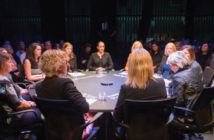By Gary Hartley of GS1 New Zealand
Radio spectrum is among the least tangible of economic goods – rather different from very tangible food products and beverages. Radio spectrum is nonetheless extremely valuable – and when used efficiently, it can add huge value to food and beverage businesses.
In any country, government allocations of spectrum will enable (or retard) the development of digital wireless communications that are fundamental to the growth of modern consumer-oriented economies. In New Zealand, officials are now working on the next stage of a spectrum allocation review process, needed to keep pace with advances in digital technology and with its ever-expanding economic potential.
A recent consultant’s report as part of this process quantified possible economic gains from the allocation of the 700 megahertz spectrum band to one of the latest standards for wireless high-speed data transmission. It is known as LTE, short for the ‘long term evolution’ to far higher capacity on the mobile communications networks of large telcos (including those operating in New Zealand).
Allocation of that particular band to LTE, rather than bands further up the spectrum, could add as much as $2.4 billion to our economy over 20 years, the consultants say. They’re talking the most efficient way to enable huge growth in high speed data transmission onto to smartphones and other portable devices. And of course, that spells huge growth in product information to consumers in the most efficient way imaginable, with all the associated opportunities for businesses to cut costs and increase sales.
It’s all part of an exciting future for the marketing and retailing of goods we use and consume. I say ‘part’ because there are other key linkages between radio spectrum and the future efficiency of businesses – RFID (radio frequency identification) is one of particular importance.
The New Zealand government has already allocated spectrum bands for RFID technology use and, as a result, this part of the future could be close! After long review, the 915-929 megahertz was allocated to the types of short-range transmission device necessary for RFID.
Our fledging RFID business community pushed for exactly this allocation because it aligns the United States and elsewhere. Since much of the RFID equipment (tags and readers) is designed and manufactured to US standards, New Zealand companies can source what they need more readily and cheaply when transitioning into RFID. It just made sense for this country’s allocation to match, more or less, that of larger jurisdictions so we can benefit from their economies of scale.
How close is RFID as a widely-adopted technology in the supply chains and consumer markets of New Zealand? No one can be sure, although there is plenty of exploratory work going on in various sectors. It is now four years since kiwifruit post-harvest operator EastPack successfully built RFID on the Electronic Product Code (EPC) standard into the operation of its Bay of Plenty cool stores, and we have yet to see another implementation of such vision and scale. We will – it is just taking time.
In fact, the same questions are being asked worldwide about mass adoption of RFID. The technology – and the importance of spectrum allocation – has been around for decades. But only nine years have passed since the first big commercial deployment started, when US retailing giant Wal-Mart required its largest suppliers to put RFID tags on pallets of goods being delivered to Wal-Mart distribution centres.
Tag quality and price have been improved vastly since then, and much more is understood about where and how RFID can be used to make supply chains more efficient and to expand consumer choice. Globally, we are at the stage of individual companies in various industries doing their own analysis and adoption of the technology for relatively narrow purposes.
According to US business academic Geoffrey Moore (in his recent book, Crossing the Chasm and into the Tornado), there will, at some time, be tipping points to mass adoption. Moore says the RFID industry (tag makers, system developers etc) got ahead of themselves in recent years and now need patience to make for a “tornado” of adoption.
RFID might not seem as sexy as high speed data streaming over radio spectrum onto your smartphone, but it is a big part of the future for many businesses. New Zealand is quietly doing the smart thing by preparing the way with the best possible allocations of its radio spectrum.
Gary Hartley is a member of the NZ FOODtechnology Advisory Panel.
General manager for sector development with GS1 New Zealand, a not-for-profit, membership driven, global standards organisation. GS1 is responsible for the development and maintenance of the standards behind such everyday objects as the barcode and Radio Frequency Identification (RFID) as well as data synchronisation and eMessaging technologies.
GS1 standards assist organisations improve efficiency and visibility in supply and demand chains both globally and across industry sectors. GS1 has offices in 108 countries with more than 1.3 million members and users, including 4700 in New Zealand.
If you have questions for Mr Hartley or suggestions on areas of interest in his specialist area, email editor Steve Best, reference Gary Hartley.





























































































